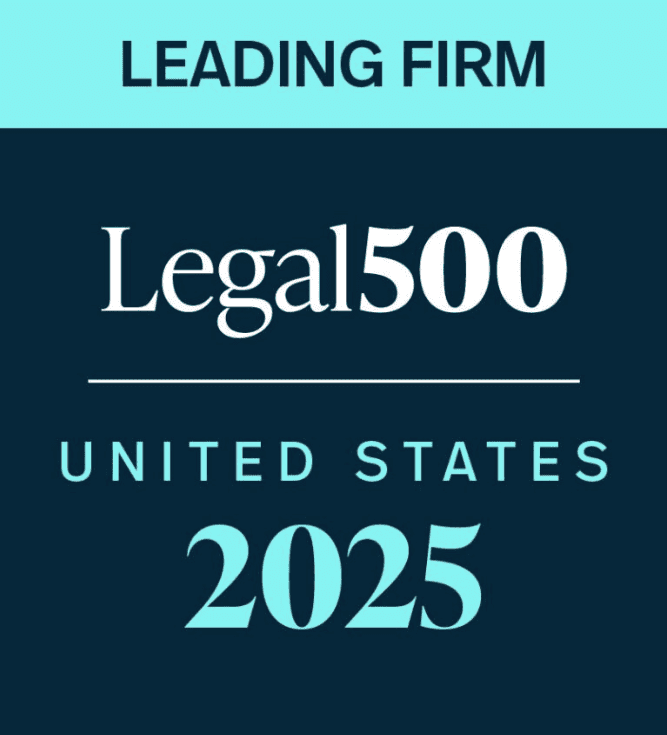Just two months after releasing guidance opening the door to cryptocurrency investments in 401(k) plans (see EBSA Compliance Assistance Release No. 2025-01 and our Benefits Report article regarding same), the Trump Administration has taken further steps to expand the investment landscape for defined contribution (DC) plans. Specifically, on August 7, 2025, President Trump issued the highly anticipated Executive Order entitled Democratizing Access to Alternative Assets for 401(k) Investors (the “Order”). The Order directs the Department of Labor (DOL) to reexamine past and current guidance on alternative asset investments in DC plans, clarify fiduciary expectations, and consult with the Securities Exchange Commission (SEC), the Secretary of the Treasury (Treasury) and other regulators to ensure coordination, as appropriate. The Order also signals the possible development of fiduciary safe harbor strategies to help plan sponsors comply with their fiduciary duties under the Employee Retirement Income Security Act of 1974, as amended (ERISA).
Significantly, on August 12, 2025—less than one week later—the DOL rescinded its December 21, 2021, Supplemental Private Equity Statement, which had discouraged ERISA fiduciaries from offering private equity investment offerings in participant‑directed DC plans, especially small 401(k) plans. This swift rescission marks a dramatic policy shift, moving away from discouragement toward what the DOL describes as a “neutral, principle‑based approach.” This policy shift appears to be consistent with the Order, which argues that participants in DC plans, such as 401(k) plans, have been disadvantaged in comparison to participants in public pension plans and private defined benefit (DB) plans that have “long experienced the potential growth and diversification associated with alternative asset investments.”
The Order sets a 180-day deadline for the DOL to carry out its directives and release appropriate guidance clarifying the duties an ERISA fiduciary owes to plan participants when deciding whether to make available alternative asset investments in DC plans (potentially including streamlined fiduciary safe harbor compliance strategies). It is important to note, however, that the Order does not exchange existing law; instead, it is a policy direction for the DOL (in consultation with the SEC, Treasury, and other appropriate regulators, as may be appropriate) to reexamine fiduciary prudence as it relates to offering alternative asset investment options under participant-directed DC plans. This article addresses key considerations for plan fiduciaries in light of the Order, so they can understand what has changed and better prepare for the DOL that will follow.
Fiduciary Considerations
Defining “Alternative Asset” Investments
The Order broadly defines “alternative asset” investments to include private market investments (e.g., private equity, debt (private credit), and non-public instruments), real estate, digital assets, commodities, infrastructure financing projects, and lifetime income strategies. The Order recognizes the breadth of this definition, noting the intentionality of the drafting and explaining that “every American preparing for retirement should have access to funds that include investments in alternative assets when the relevant plan fiduciary determines that such access provides an appropriate opportunity for plan participants and beneficiaries to enhance the net risk-adjusted returns on their retirement assets.”
Past Access and the TDF Pipeline
For some DC plan participants, access to alternative asset investments is not new. In fact, many plan participants have already accessed alternative asset investments—not through plan menus—but via self-directed brokerage windows. Self-directed brokerage windows—estimated to be available in roughly 38.8% of 401(k) plans—may allow plan participants to choose from a wider range of investments, such as ETFs, REITs, and other vehicles. While brokerage windows broaden choice, plan fiduciaries must ensure clear disclosures regarding risks, accessibility, and participant responsibility. According to the Employee Benefit Security Administration (EBSA), ERISA fiduciaries should monitor the availability of brokerage windows and provide appropriate participant education.
The recent trend of gradually integrating alternative asset allocations within target‑date funds (TDFs) is noteworthy. Asset managers are embedding private equity, real estate, infrastructure, and private credit into TDF glide paths to emulate DB-style diversification. For example, BlackRock has estimated that modest private market allocations could increase savings outcomes by roughly 15% over a 40-year horizon, and research from Georgetown University suggests incorporating such alternatives into TDFs could raise annual retirement income by 17%, even in conservative scenarios. Also, TD Asset Management has introduced TDFs with 20–25% private alternatives, consistent with allocations seen in institutional portfolios. Such inclusion of private equity components within professionally managed asset allocation funds was initially supported by the DOL in a June 3, 2020 Information Letter, and is restored as the DOL’s current position following the rescission of the December 21, 2021, Supplemental Private Equity Statement discouraging such components. Still, the inclusion of alternative asset investments in TDFs is a significant consideration and brings additional fiduciary responsibilities, including valuation cadence, benchmarking, cost structures, and transparency. Plan fiduciaries must apply heightened due diligence, participant disclosure, and governance oversight when considering TDFs with alternative asset allocations.
Fiduciary Obligations
The Order emphasizes that alternative asset investments are not new to ERISA retirement plans, noting their long history in DB plans. However, the Order fails to acknowledge the significant differences between DB plans and DC plans, especially participant-directed defined contribution plans, like 401(k) plans. Notably, defined contribution plans, especially 401(k) plans, pose unique fiduciary and administrative challenges. While DB plans provide a guaranteed benefit to participants (i.e., the plan sponsor bears the investment risk), participants, not plan sponsors, bear the investment risk in participant-directed DC plans, and daily valuation and liquidity are expected. The Order itself does not alter ERISA’s principle fiduciary standards, including the prudence and loyalty standards. Until the DOL issues further guidance, plan fiduciaries remain subject to ERISA’s existing framework. Thus, plan fiduciaries should treat alternative investments with the same level of care and caution, and conduct robust due diligence, recognizing potential issues of valuation cadence, minimum investment thresholds, and benefits, rights, and features compliance.
Litigation
The Order expresses the Trump Administration’s intent to “relieve the regulatory burdens and litigation risk that impede American workers’ retirement accounts from achieving the competitive returns and asset diversification necessary to secure a dignified, comfortable retirement.” Nonetheless, litigation concerns remain very real for plan fiduciaries. In fact, the Order simultaneously acknowledges that fiduciaries of 401(k) and other DC retirement plans have a duty to “carefully vet and consider all aspects” of alternative asset investment offerings, “including managers’ capabilities, experiences, and effectiveness,” and that the DC industry continues to be faced with “burdensome lawsuits” filed by “opportunistic trial lawyers.” These acknowledgements underscore the challenges the DOL will likely face in attempting to simplify the complex nuances of ERISA’s fiduciary duties of loyalty and prudence in the selection and monitoring of alternative asset investments, and the significant potential for private sector lawsuits.
In the last few years alone, hundreds of private sector ERISA fee litigation cases have been filed that focus on the prudence of investment selection, fees, and performance. The unique nature of alternative asset investments, including challenges in valuing assets, lack of benchmarks, variable manager tenure, comparative lack of regulatory oversight and significant investment complexity for the average investor, create unchartered and risky waters for plan fiduciaries. Industry organizations representing the plaintiffs’ bar have already indicated that the complexity and volatility of alternative investments raise significant questions as to the prudence of such investments for a 401(k) plan’s investment lineup, which are likely to give rise to a new wave of breach of fiduciary duty cases. Importantly, while the DOL may provide simplified fiduciary guidance in support of alternative asset investments (potentially including safe harbor compliance strategies), following the 2024 Supreme Court decision in Loper Bright Enterprises v. Raimondo, 603 U.S. 369 (2024), courts will not be required to defer to the DOL’s interpretations of fiduciary responsibility when applying ERISA’s statutory provisions. For these reasons, many fiduciary liability insurers have begun to ask questions about the inclusion of alternative asset investments as part of their renewal questionnaires. In short, plan fiduciaries must carefully vet any alternative asset investment offering. Beyond initial vetting, plan fiduciaries should also implement protocols to monitor such investments, educate participants about the risks and fees associated with such investments, and where applicable, consider pooled investment structures to reduce litigation exposure.
Liquidity and Benefits, Rights and Features
From an implementation perspective, many alternative asset investments pose inherent administrative complexities due to valuation cadence, limited liquidity, and effective availability. Because 401(k) plans are designed to provide daily valuations and near or immediate liquidity so that plan participants can change their investment elections without significant constraints, alternative asset investments may conflict with the needs of plan participants and required fiduciary timeframes. Furthermore, many alternative asset investments have minimum investment requirements. Such requirements may give rise to benefits, rights and features issues where an investment is only effectively available to a subset of the participant population with an adequate balance to enter into the investment. These complexities warrant careful consideration and collaboration between plan fiduciaries, advisors, recordkeepers and counsel to evaluate alternative investment vehicles for administrative feasibility.
The Road Ahead
While the DOL works to meet its 180-day deadline to provide guidance, alternative asset investment managers recognize the tremendous opportunity in newfound access to nearly $13 trillion in investment potential represented by the DC plan market and are moving quickly to start marketing products and platforms to investment advisors, managers, and plan fiduciaries. Plan fiduciaries should respond deliberately to the opportunity, not reactively. Action steps should include:
- seeking education opportunities to better understand these investments;
- monitoring forthcoming guidance and evaluating whether any safe harbors emerge;
- carrying out robust due-diligence to better understand the prudence of any potential alternative asset investment option;
- developing frameworks to monitor managers and evaluate strategies, fee levels, and liquidity terms (including potential investment policy statement updates);
- providing detailed participant education to explain the risks, fees, liquidity constraints, and expected outcomes of investment alternatives; and
- retaining advisors with expertise in alternative asset investments.
While the Executive Order promises expanded access, plan fiduciaries should continue to apply ERISA’s existing standards of prudence and loyalty. A measured approach, emphasizing education, monitoring, and governance, will be critical as the regulatory landscape evolves. Ultimately, plan fiduciaries will benefit from embracing a cautious but forward‑looking mindset, recognizing both the opportunities presented by alternative asset investments and the additional fiduciary burdens they bring, which could be eased by the issuance of safe harbor guidance. By taking this approach, plan fiduciaries can help plan participants benefit from expanded access to investment options, while maintaining compliance and properly managing risk.
Pursuant to the 180-day deadline imposed under the Order, the DOL is anticipated to release additional guidance on or before February 3, 2026. If you have any questions regarding how the Order impacts your DC plans, please contact us.



